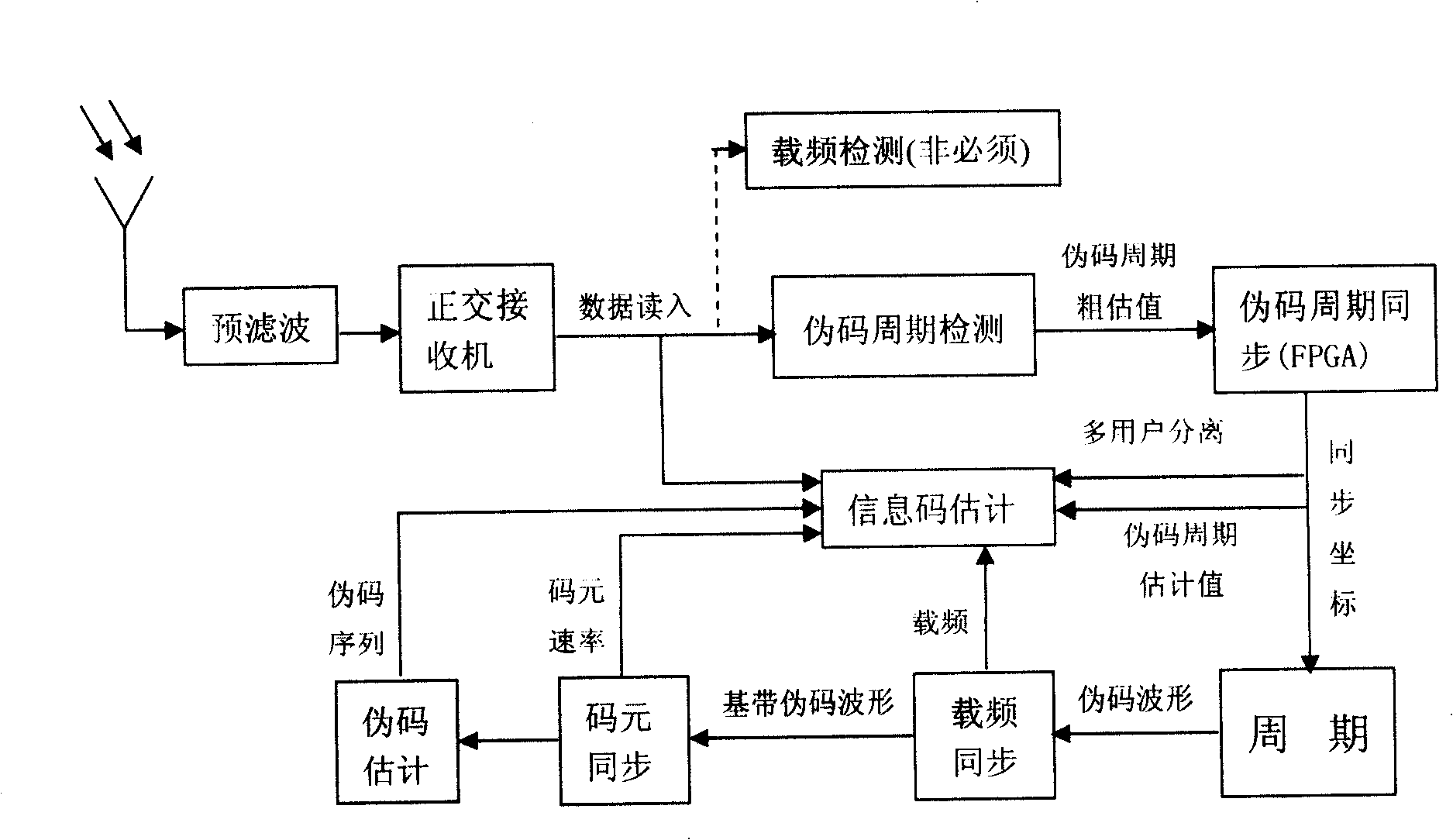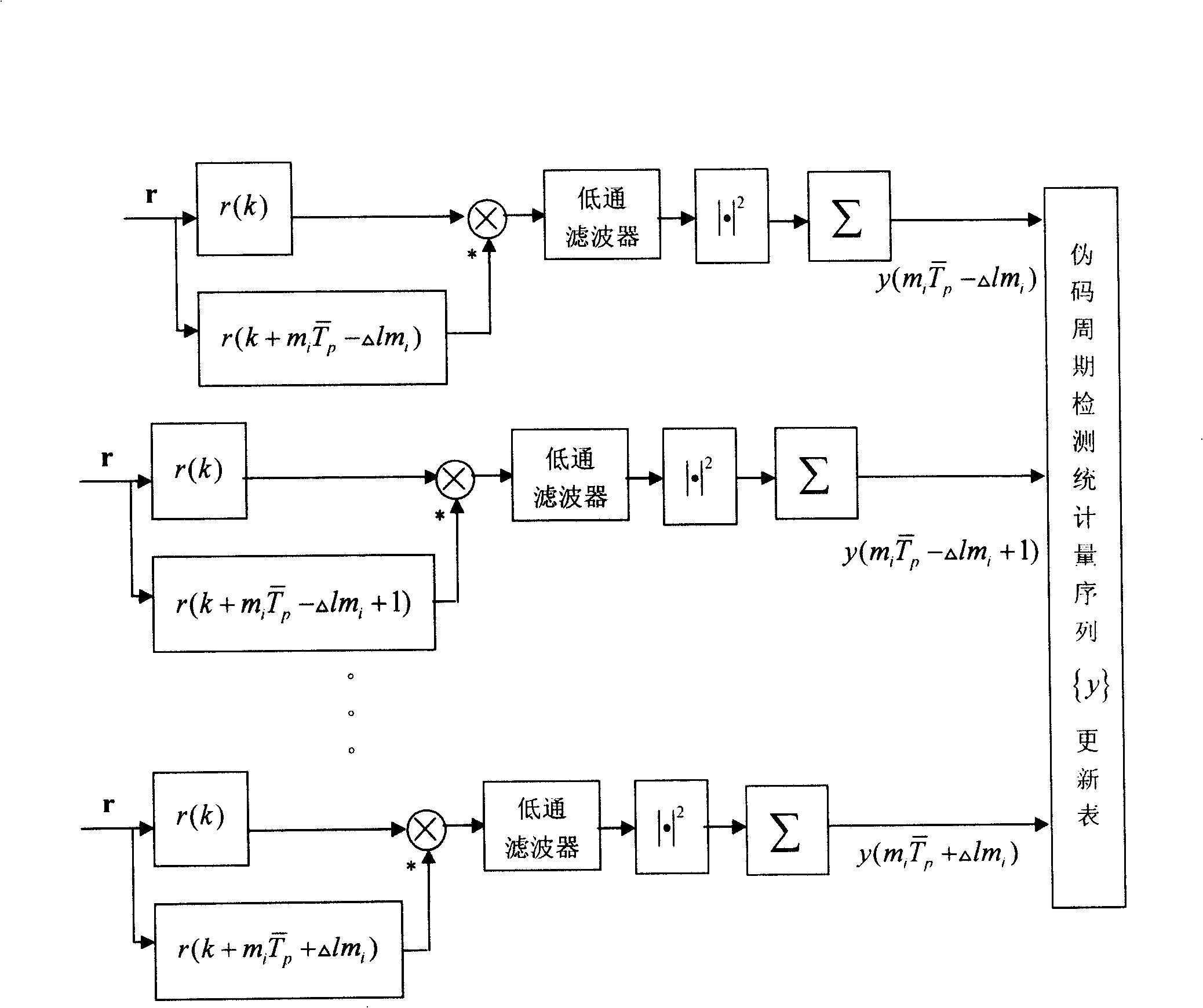Real time pseudo-code period synchronous technique for non-cooperation low signal-noise ratio direct-sequence spread-spectrum signal
A technology of direct sequence spread spectrum and low signal-to-noise ratio, which is applied in the field of communication and can solve problems such as unfavorable detection, precise estimation of carrier frequency, difficulties in coherent reception, and low signal-to-noise ratio
- Summary
- Abstract
- Description
- Claims
- Application Information
AI Technical Summary
Problems solved by technology
Method used
Image
Examples
Embodiment Construction
[0032] The system scheme realized by adopting the pseudo-code period synchronization technique of the present invention is as figure 2 As shown, follow the implementation steps of first despreading and then demodulation. Because it can make full use of the gain provided by the pseudo-code similar to cooperative reception, it has better working performance under low signal-to-noise ratio. It puts carrier frequency estimation and bit code rate estimation after periodic coherent accumulation, because coherent accumulation improves the signal-to-noise ratio and ensures that the signal-to-noise ratio of the accumulated signal is improved to at least 0dB, and then uses traditional carrier and rate line recovery method can easily estimate the carrier frequency and symbol rate.
[0033] figure 2 The pseudo-code period synchronization algorithm in is the core of the whole system scheme. For the convenience of description, consider the following DSSS signal discrete model:
[0034...
PUM
 Login to View More
Login to View More Abstract
Description
Claims
Application Information
 Login to View More
Login to View More - R&D
- Intellectual Property
- Life Sciences
- Materials
- Tech Scout
- Unparalleled Data Quality
- Higher Quality Content
- 60% Fewer Hallucinations
Browse by: Latest US Patents, China's latest patents, Technical Efficacy Thesaurus, Application Domain, Technology Topic, Popular Technical Reports.
© 2025 PatSnap. All rights reserved.Legal|Privacy policy|Modern Slavery Act Transparency Statement|Sitemap|About US| Contact US: help@patsnap.com



